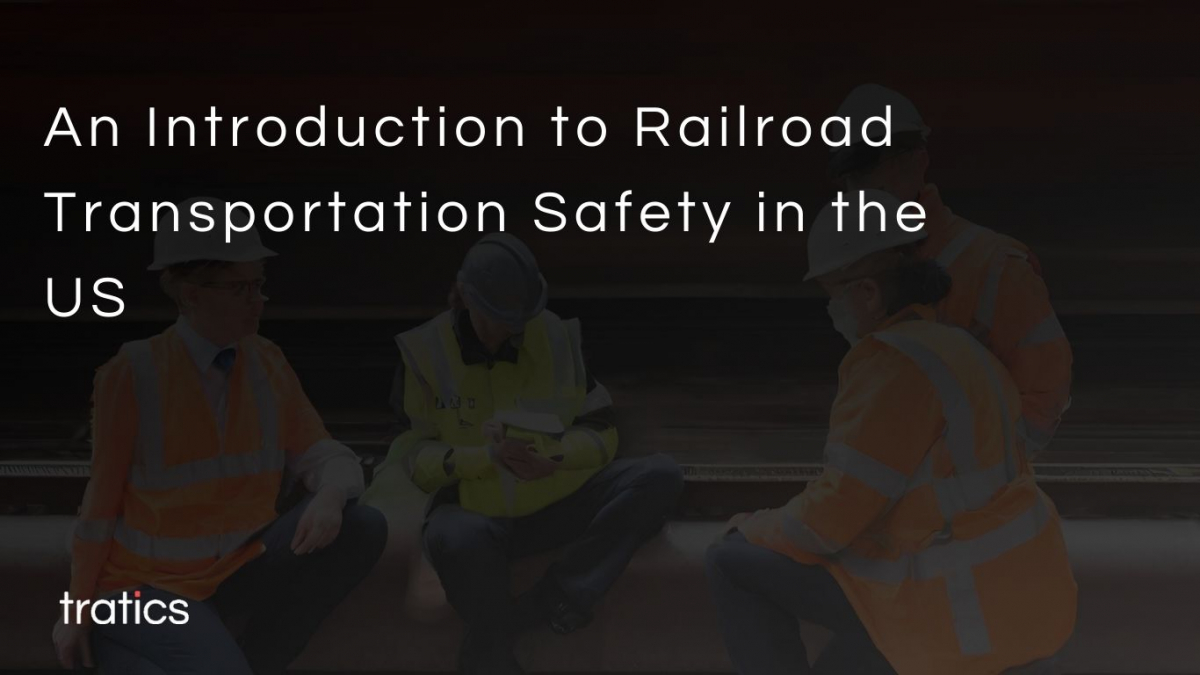The Norfolk Southern (NS) derailment in East Palestine, Ohio last year underscores the immense importance and cost of safety in the rail industry. With over $1.1 billion in expenses tied to the incident so far, it not only highlights the financial ramifications of safety lapses but also the broader impacts on community trust and environmental well-being. We just passed the one-year anniversary of this incident, along with attention from the highest level of government, including President Biden. While politicizing such unfortunate events is never the right thing, East Palestine is a critical reminder of the rail industry’s responsibility to prioritize stringent safety and robust emergency response strategies to prevent such costly accidents and safeguard their employees, customers, and the communities they serve.
This is our first installment of our blog series on freight railroad transportation safety.
The Lifeline of America's Economy
Freight railroads are not just about the clatter of tracks or the powerful sounds of their air horns. They are the giants powering our economy in the background, carrying everything from the food on our tables to the cars in our driveways. Spanning over 140,000 miles, the US freight railroad network is one of the world's most extensive and efficient transportation systems. It's a transportation network that ensures that America's supply chain never skips a beat.
Safety: The Heartbeat of Railroad Operations
But what keeps the railroads running smoothly in the background and not noticeable for most regular Americans? The answer is rail safety. Safety in the railroad industry is not just a policy or a set of rules; it's the guiding principle that drives every operation. From the engineers on the locomotives to the technicians monitoring the tracks, every individual in the freight railroad industry has a primary goal of doing their job safely.
The importance of safety in freight railroads cannot be overstated. A single lapse can lead to dire consequences - loss of lives, significant environmental damage, and substantial economic losses. The 2013 Lac-Mégantic rail disaster, where a freight train carrying crude oil derailed and exploded in a small Canadian town, serves as a harrowing reminder of what's at stake. Incidents like Lac-Mégantic or East Palestine underscore the constant vigilance required in the operation freight trains.
At its core, the primary concern of railroad safety is the protection of life. The operation of freight trains, often carrying hazardous materials over long distances, poses significant risks. A single accident can result in tragic loss of life and severe injuries to employees, passengers, and the public.
Beyond the human cost, safety lapses in freight railroads can lead to enormous economic repercussions. Accidents disrupt the supply chain, leading to delays, lost revenue, and damaged goods. In a world where logistics and timely delivery are paramount, maintaining a reputation for safety and reliability is crucial for railroad companies.
Freight train accidents, particularly those involving hazardous materials, can have devastating environmental impacts. Spills and explosions can contaminate land and water resources, affecting ecosystems and communities. Ensuring safety is, therefore, also about protecting our environment.
Lessons Learned
Historical incidents have often been the catalysts for safety reforms. The Lac-Mégantic rail disaster in 2013, for example, resulted in 47 deaths and the destruction of much of the town's center. This tragedy highlighted the risks of transporting hazardous materials and led to a reevaluation of safety practices and regulations in North America.
In response to such incidents, regulatory bodies like the Federal Railroad Administration (FRA) have implemented stringent safety standards and regulations. These are not static but evolve based on new findings, technological advancements, and changing industry landscapes. Continuous improvement in safety practices is not just a regulatory requirement but a moral imperative for the rail industry.
Technological advancements have been a game-changer in enhancing railroad safety. From sophisticated track monitoring systems to predictive analytics for maintenance and automated braking systems, technology plays a pivotal role in preventing accidents and enhancing overall safety.
The importance of safety in freight railroads cannot be overstated. It is a complex interplay of ethical responsibility, regulatory compliance, economic necessity, and technological innovation. In our next post, we will explore the regulatory landscape governing this sector, focusing on the crucial role of the Federal Railroad Administration (FRA) and other agencies.


